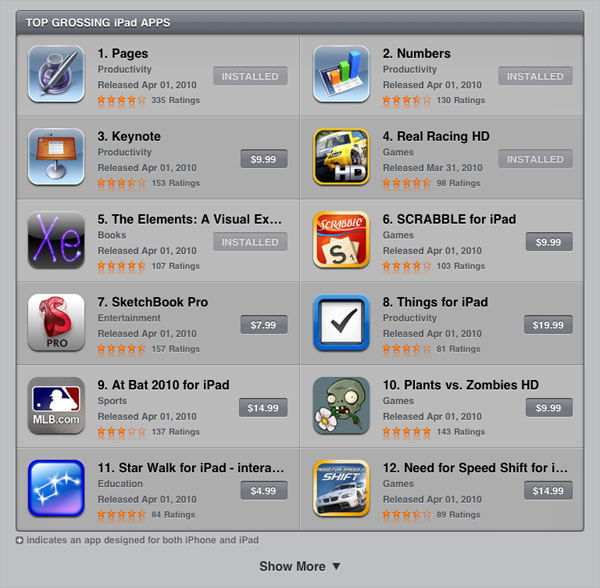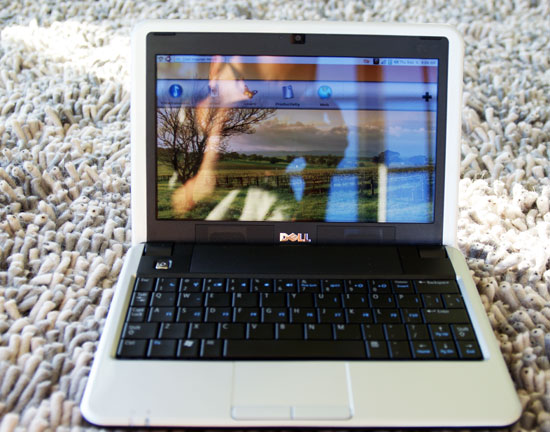Anand's Thoughts on Google's Chrome OS
by Anand Lal Shimpi on December 8, 2010 6:23 PM ESTFifteen years ago if you wanted to write an application that would run on over 90% of the world’s personal computers, you only needed to target one OS. Today, to do the same, you’d need to develop for ten - Windows, Linux, OS X, Android, iOS, webOS, BlackBerry OS, Symbian, MeeGo and of course, the web.
You don’t get order without first having chaos and you don’t end up with consolidation without first going through fragmentation. The PC era was dominated by Microsoft and Intel. The transition to ubiquitous computing allowed for many more competitors, which results in a great deal of fragmentation up front.
The goal however, is the same. Every player in this space wants to be what Microsoft was during the PC era. Even the actions are the same. There’s no interoperability between platforms, there are closed door negotiations and exclusivity agreements resulting in a number of alliances that are not easily broken.

Microsoft’s leverage is existing revenue stream. Its partners want to continue to receive favorable terms for existing PC shipments and thus tend to avoid embracing Google or other non-Microsoft OSes too eagerly. Google’s leverage is the promise of a very un-Microsoft future. Lower costs, friendlier terms and the ability for its partners to get in on the ground floor of something big. Neither approach is guaranteed and aligning yourself with one company is risky. The rest of the players are vertically integrated hardware vendors that are trying to mimic the success that Apple has had with iOS and OS X (e.g. HP/Palm, RIM). MeeGo is the only exception there as Intel/Nokia want it to be treated as an alternative to Android.
Then there’s the web. The most universal of all of the platforms, the web isn’t controlled or dominated by any one company. Great open source browser projects have ensured that nearly all of the platforms I listed above have great ways to access the web, and most can run any app you’ve got on the web.
PCs are the more traditional portal to the web. Sure they can do much more than run a web browser, but as web applications and services grow more powerful, the list of things you have to do outside of a browser window shrinks. This is especially true for mainstream consumers who check their email in a web browser, get their news in a web browser, chat in a web browser, watch videos in a web browser and listen to music, all within a browser window. In fact, the netbook was born out of the idea that you don’t need a huge transistor budget to provide the silicon that can drive a browser and the apps you run on top of it.
Fifteen years ago most households had one computer, if that. These days you might have five within a single room (desktop, notebook, smartphone, media streaming box and tablet). Households didn’t become infinitely more wealthy over the past two decades - the cost of these secondary and tertiary computing devices just dropped. Moore’s Law enables two things: more processing power at the same cost, or equivalent processing power at a lower cost. Iterate the Law a few times and you’ll eventually be able to create silicon that’s fast enough for specific tasks at a very low cost. Shrinking transistor feature sizes, costs and high levels of silicon integration gave us the fast enough ARM based SoCs that enable today’s awesome smartphones, as well as the Atom processor that created the netbook industry.

Interestingly enough, the problems that impact the high end of the market also impact this fast enough segment of the market. At the high end we’ve got tons of compute, storage and IOPS thanks to multicore CPUs/GPUs, low memory costs and SSDs, but we don’t have a lot of software to really tax it all. Believe it or not, the same gap exists at the low end. The difference is that while Atom is more than fast enough to run a web browser, it’s typically burdened by a heavy weight OS that hampers the user experience.










104 Comments
View All Comments
tipoo - Wednesday, December 8, 2010 - link
Yeah, its just a prototype to test the OS but I really wish manufacturers used this kind of design more often! No logos, no curves, no patters, no glossy black plastic, nothing but what matters.tipoo - Wednesday, December 8, 2010 - link
*patternsyzkbug - Wednesday, December 8, 2010 - link
Looks like a lot of us here share the same vision of how notebooks should be designed. Here is an idea. Let’s start an open-hardware project (analogous to an open-source project) defining what our notebook should be (high quality LCD, no 16:9 screen, no gloss, thin bezel, no-flex keyboard, etc.) May be one day, a notebook manufacturer will hear us and turn it into a real product. Anand, do you want to drive this? ;)Dug - Thursday, December 9, 2010 - link
Hear hear!It seems so obvious, but good ol stupid marketing and project managers can't get it through their thick heads to listen to customers.
vol7ron - Tuesday, December 14, 2010 - link
Perhaps your wants aren't what the majority of people want; and since price is based off supply, demand, and cost, perhaps they really don't want to lose.When you start specializing, you lose an economy to scale. There are higher manufacturing costs, which means it'd cost more for the rest of the people, which equals less sales, which equals less profits. This is one of the reasons why the Dell manufacturing process was so successful; they used only a couple of base models so that prices would not be as high.
But I agree, having some variance in design would be nice. I would not call it "open-hardware", I'd call it "open-design", which could encompass hardware as well as software.
Computer Bottleneck - Thursday, December 9, 2010 - link
I like that idea, but what platform/OS would that go best with?mrBug - Sunday, December 12, 2010 - link
AROS !!!!!!!!!!!!!!gr00 - Friday, January 14, 2011 - link
I wouldn't call it open hardware because open-source hardware already exists, more like "sensible notebook design initiative". Definitely agree on "no 16:9 screen, no gloss", many of those are just standards that I hope will come to pass.GullLars - Thursday, December 9, 2010 - link
I liked the design, with exception of connectivity options (seriously 1 USB, and no external storage?), but the name is not thought through.The reference platform is called Cr-48, which is a very unstable radioactive isotope (λ < 24 hours) of the element Chrome (nr 24 in the periodic table)... Cr-52 is the most abuntant stable isotope, and would make a better name for a computer...
tipoo - Thursday, December 9, 2010 - link
Nah. This is a public beta of sorts, its going to be buggy. Naming it after the stable molecule of Chrome would ruin its name, naming it after an unstable isotope with a short half-life makes sense for this :)